Art History Final Study Guide
1/75
Earn XP
Description and Tags
Vocab and images from the last section of material SIUE Art-225
Name | Mastery | Learn | Test | Matching | Spaced |
|---|
No study sessions yet.
76 Terms
St. Foy, Romanesque / France

Reliquary St. Foy, Romanesque / France

Last Judgement Tympanum - Autum, Giselbertus - Romanesque / France

Bayeux Tapestry, Romanesque / France
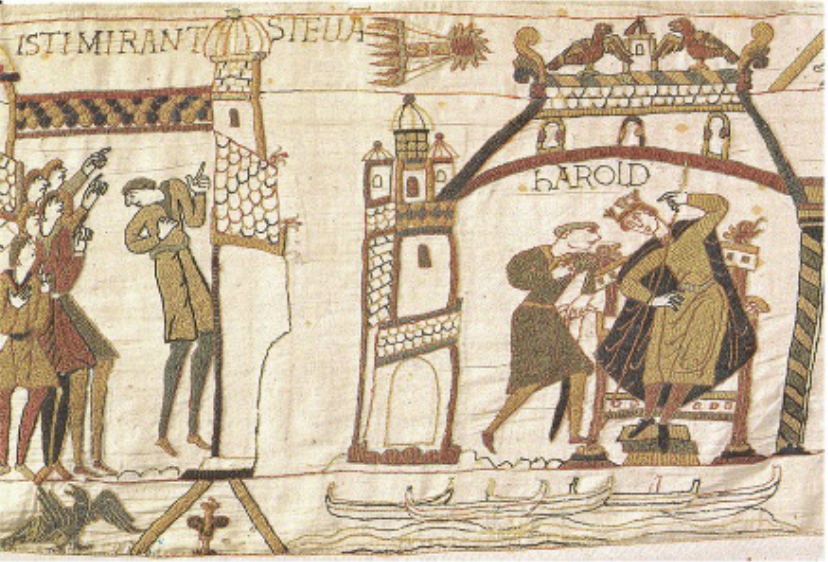
Christ in Majesty Tympanum - Moissac, Romanesque / France

St. Denis, Gothic / France
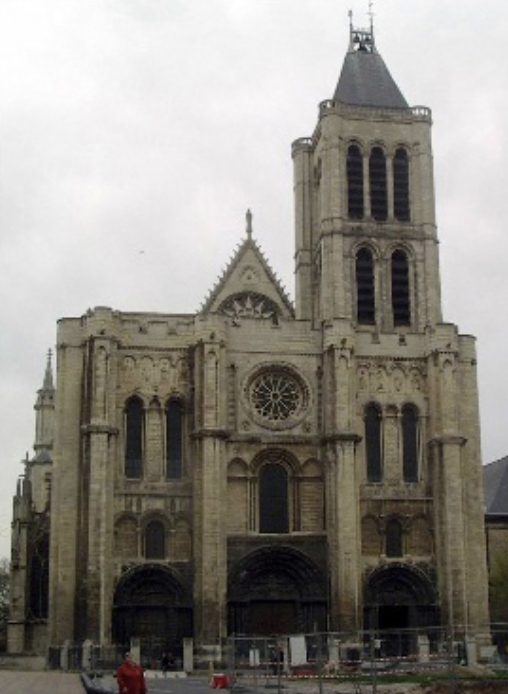
Charles Cathedral, Gothic / France

Annunciation / Visitation, Reims - Gothic / France
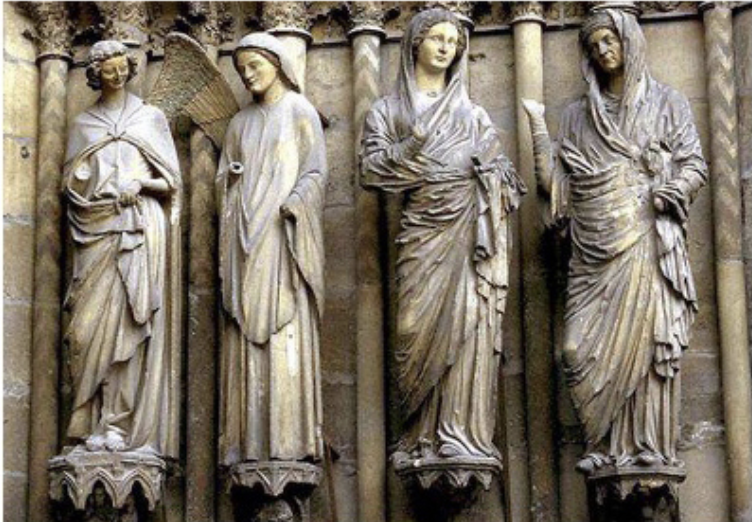
Annuciation / Nativity, Nicola Pisano Gothic
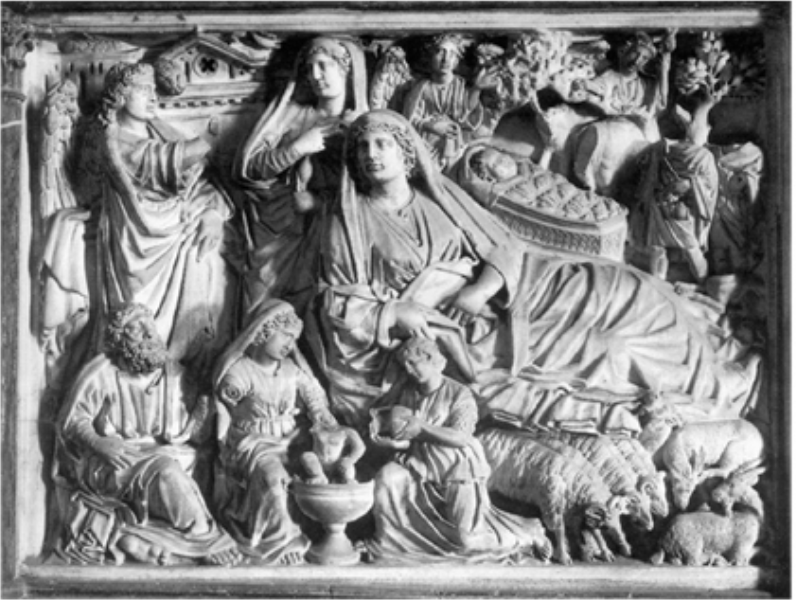
Enthroned Madonna, Cimabue Gothic
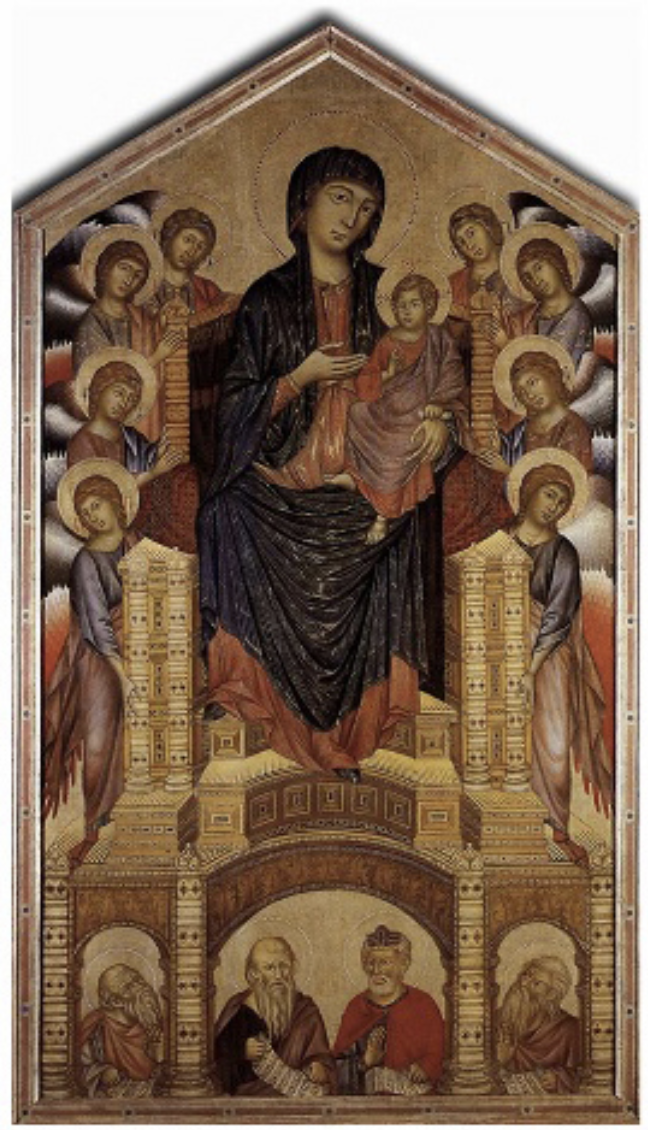
Enthroned Madonna, Giotto Italian Gothic
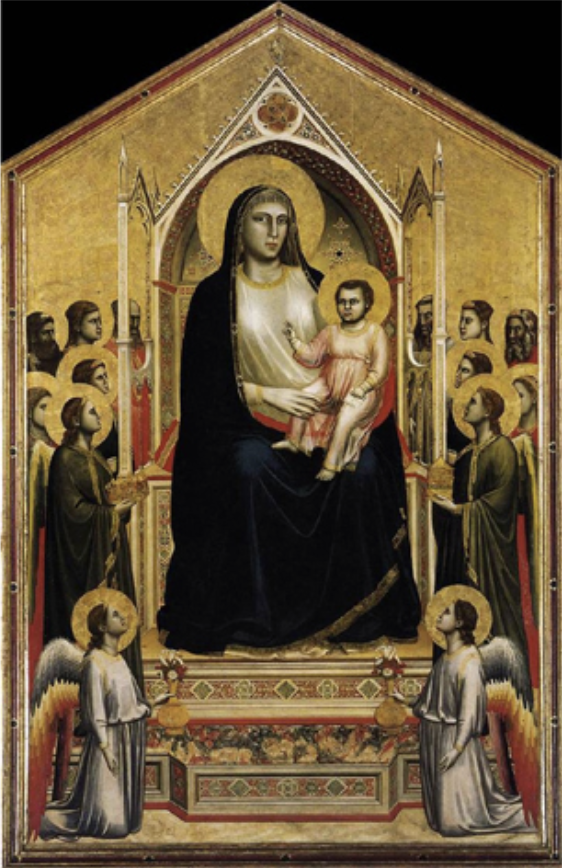
Lamentation, Giotto Italian Gothic
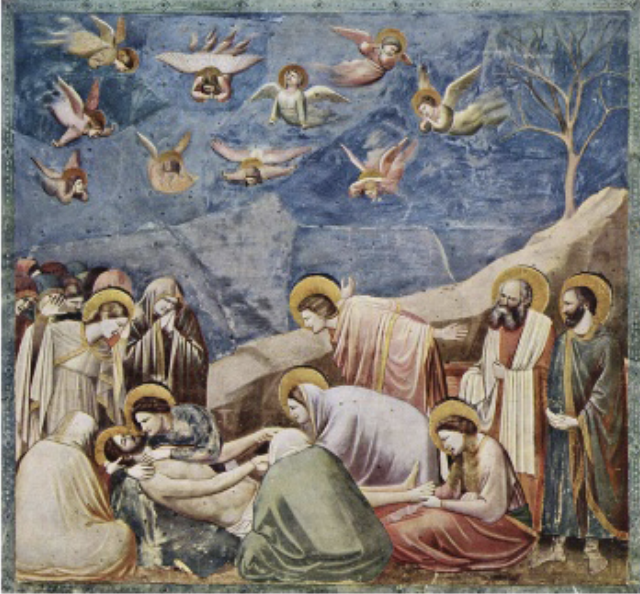
Betrayal of Christ, Duccio Italian Gothic
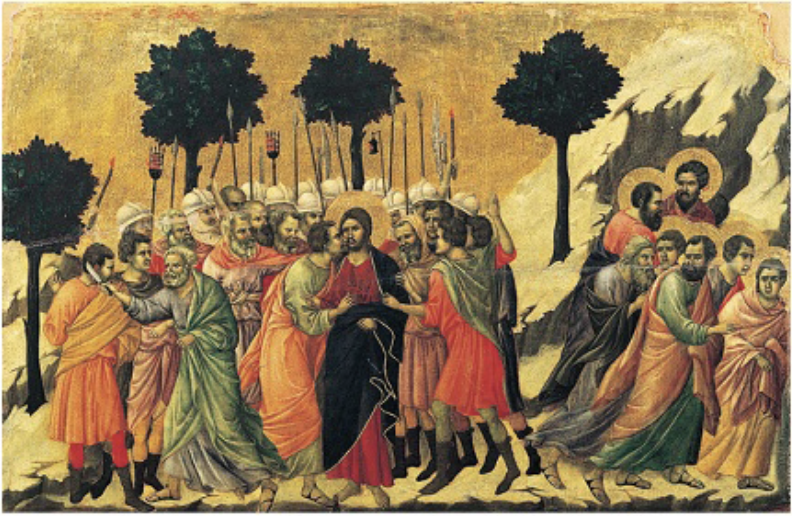
Annuncuation, Simone Martini Italian Gothic

Maesta, Duccio Italian Gothic
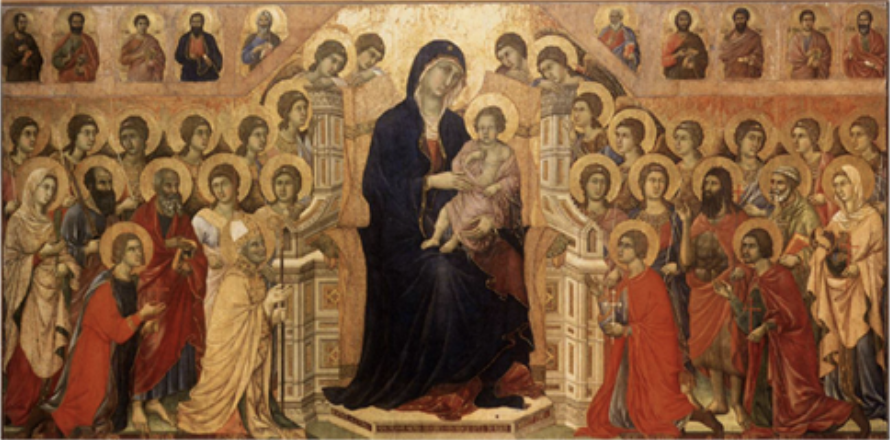
The Merode Altarpiece, Robert Campin Northern 15th Century
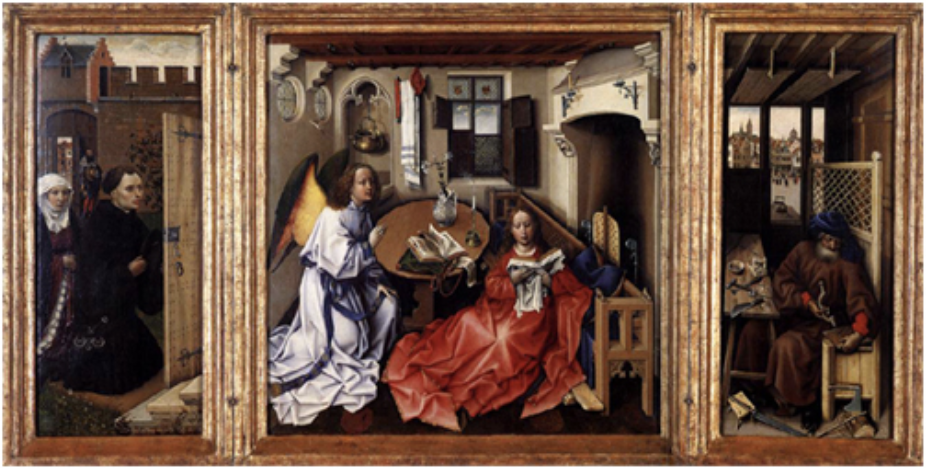
The Well of Moses, Claus Sluter Northern 15th Century

Arnolfini Wedding Portrait, Jan Van Eyck Northern 15th Century

Romanesque
Broad range of styles that vary depending on region. Stylistic rather than historical term. Generally refers to period between 1050 - 1150
3 Main functions of art in churches during Romanesque and Gothic periods
1) To glorify God
2) Educational
3) Scare population into following the church doctrine
Feudal System
social and economic structure of medieval Europe that influenced art and architecture through patronage, themes, and societal hierarchy
The Crusades
Artistic and cultural changes between Western Europe and the Middle East from the late 11th to 13th centuries
Pilgrimage
Cult of relics, traveled to sacred sites / shrines - reaches a peak in the 11th and 12th centuries. Penitent and devout christians traveling to holy places
Relics
special items to specific regions that people would travel to see
Reliquaries
an object that holds or contains a relic
Ambulatory
a covered walkway or passageway that encircles the apse or the central space of a church
Rib Vaulting
architectural feature that used a framework of intersecting arched ribs to support a vaulted ceiling
Tympanum
the semi-circular or triangular decorative space above a door or window, enclosed buy the lintel and arch
Double Scale
having two different scales in one piece, an example would be having a person the size of a building when in reality they are in different scales so that they would both fit in the piece
Cloister
a covered, colonnaded walk, typically found in monasteries and convents, that surrounds a central courtyard or garden
Portal
a grand, imposing doorway, especially one that is elaborately decorated and symbolically significant
archivolt
a decorative band of molding that frames an arched opening, often found in Romanesque and Gothic architecture
Jambs
the vertical sides of an opening like a door or window
Trumeau
a central pillar or post in a large doorway or portal that supports the lintel
Last Judgement
the final day when all who have ever lived will stand before god to be judged for their thoughts, words, and actions
“True Cross”
the wood on which Jesus was crucified
Gislebertus
12th century French Romanessque sculptor, best known for his work on the Autun Cathedral in France
Hildegard of Bingen
12th century German Benedictine abbess, mystic, and visionary known for her illiuminated manuscripts
William the Conqueror
Central figure in Bayeux Tapestry, a famous embroidered cloth depicting the Norman Conquest of England
Gothic Era
Style emerging in the 12th century France, Originally a derogatory term now used in reference to painting and sculpture of that period as well as architecture.
Guilds
Mideval and Renaissance associations of artisans and merchants that regulated their trades by controlling trading, setting quality standards, and supporting artists through patronage.
Dominicans
One of the 2 orders of the church who specifically followed St. Dominic
Franciscans
On of the 2 orders of the church who specifically fdlowed St. Francis
Age of Chivalry
period from the 11th century to around the 15th century in England
Scholasticism
a connection between the intellectual methods of medieval philosophy and the style of Gothic architecture and art, where a system of thought is reflected in the design and structure of buildings and artworks
St. Augustine
Christian philosopher and theologian who influenced Western Christianity
St. Thomas Aquinas
a revered intellectual and theologian, symbolized by a dove, a book, or the sun/star to represent divine guidance and his profound intellect.
The Great Schism
two distinct periods of papal dispute and division within the Catholic Church
Abbot Suger
medieval French abbot and statesman credited with initiating the Gothis style of architecture
Pointed Arches
arches with a sharp apex, that directs weight downward more efficiently than rounded arches
Tracery
the ornamental stonework framework that supports the glass windows and divides them into sections using a system of bars or ribs
Beau Dieu
a famous statue of Christ located on the central portal of Amiens Cathedral
Quatrefoil
a four leaf clover shaped ornamental design with four lobes symbolizing good luck
Rayonnant / Radiant Style
petaled windows with an emphasis on decoration, creating a sun like shape flooding the interior with light
Grisaille
painting technique using shades of gray to crerate a 3D effect using shadows
Books of Hours
devotional book for private use, popular in the late Middle Ages, that contains prayers for the eight canonical hours of the day
Late Medieval / Early Renaissance
period that starts in Italy and Northern Europe in the 15th century. rebirth of classicism of Greeks and Romans. Return to naturalism. Renaissance will be a reinterpretation of Classicism in a Christian context
5 Characteristics of Renaissance
1) Optimism
2) Humanism
3) Revival of Classical themes in Art and Literature
4) Rationalism
5) Rise in Status of Artist
Vasari’s 3 Ages of Art
Art rises to perfection with Greeks and Romans, Art declines in Middle (‘Dark’) Ages followed by another rise to perfection in the Renaissance
Giogio Vasari
Italian painter, architect, and writer, most known for his book that builds the foundation of modern art history
International Gothic
a late medieval art style that flourished from the late 14th to the early 15th centuries, spreading across Europe and bridging the gap between Gothic and Renaissance art
Christ Triumphant vs Christ Suffering
Christ Triumphant depicts Christ as a divine, suffering-immune figure, ofter regal and alive on the cross, while Christ Suffering emphasizes his humanity and agony, with realistic wounds, a crown of thorns, and a body conveying physical pain.
St. Francis
significant for inspiring a new, more humanistic and naturalistic style of art, influencing artists like Giotto to depict religious scenes with emotional depth and a connection to the natural world
Stigmata
paintings depicting the wounds of Christs crucifixion, hands, feet, and side, that miraculously appeared on the body of a saint, most famously St. Francis of Assisi
Nicola Pisano
a 13th century Italian sculptor considered a founder of modern sculpture due to his revival of classical styles
Giotto
Italian painter, sculptor, and architect who broke from the medieval style to pioneer a new naturalism in art leading the way to the Renaissance
Duccio
Italian painter from Siena who is considered the founder of Sienese school of painting
Limbourg Brothers
Herman, Paul, and Jean, were Dutch illuminators known for creating the famous Très Riches Heures du Duc de Berry
Claus Sluter
influential Dutch sculptor, active in the late medieval period in the Duchy of Burgundy
Robert Campin
Northern Renaissance painter, considered a founder of the Flemish school, who is also known as the Master of Flemalle
Jack Van Eyck
perfected oil painting in naturalism
Dualism
the representation of concepts as opposing, contrasting paits, such as the spititual versus material, or life vs. death
Romanesque Period
1000 - 1200 CE
Gothic - France Period
1140-1300 CE
Italian Gothic Period
1300 - 1348 CE
Northern Renaissance
1400-1500 CE